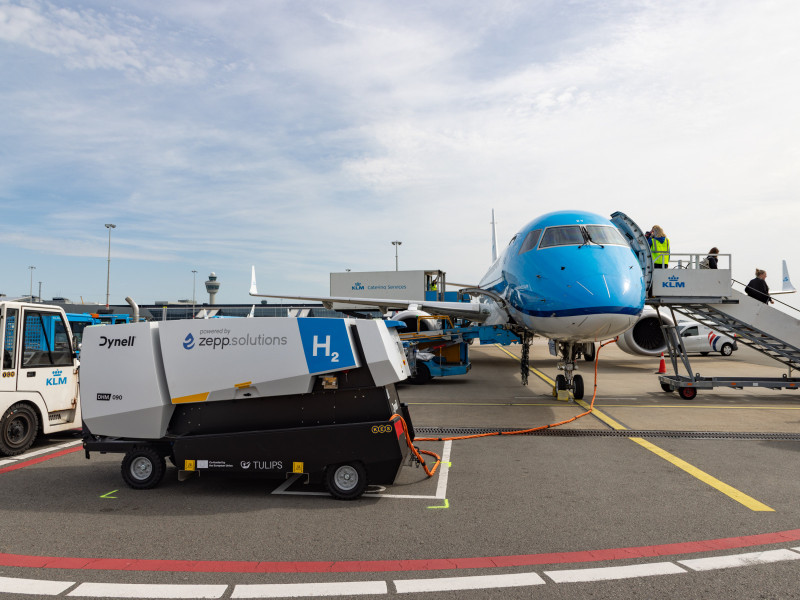Schiphol Airport is pioneering the use of hydrogen-powered Ground Power Units (GPUs) to supply stationary aircraft with power.
The introduction of the H2-GPU, developed by Dutch hydrogen scale-up zepp.solutions in collaboration with Austrian manufacturer Dynell, marks a significant step in the airport’s goal to achieve emission-free ground operations.
The H2-GPU at Schiphol is heralded as the first operational hydrogen-powered GPU in the world. By using green hydrogen, produced without CO2 emissions using electricity from renewable sources, this initiative aligns well with global sustainability goals. However, while the environmental benefits are clear, the scale of this implementation is limited. Only a single unit is currently in use, raising questions about the broader impact and feasibility of scaling up this technology across larger fleets and multiple airports.
One of the key advantages touted for the H2-GPU is its ability to be refueled on-site by a tanker truck, eliminating the need for time-consuming relocations to charging points required by battery-based e-GPUs. Despite this, battery-based e-GPUs have been criticized for their limited capacity, necessitating the continued use of diesel GPUs for certain operations. The hydrogen GPU addresses these capacity issues, but it remains to be seen whether it can fully replace diesel units in all scenarios or if it will only serve as a complementary solution.
The H2-GPU project is part of TULIPS, a European partnership involving 29 aviation entities and knowledge institutes, led by the Royal Schiphol Group, and is partly subsidized by the EU. This collaboration and funding support highlight the importance of multi-stakeholder initiatives in advancing sustainable technologies. However, relying on subsidies may not be a sustainable long-term strategy. The true test will be whether such innovations can achieve economic viability without external financial support.
